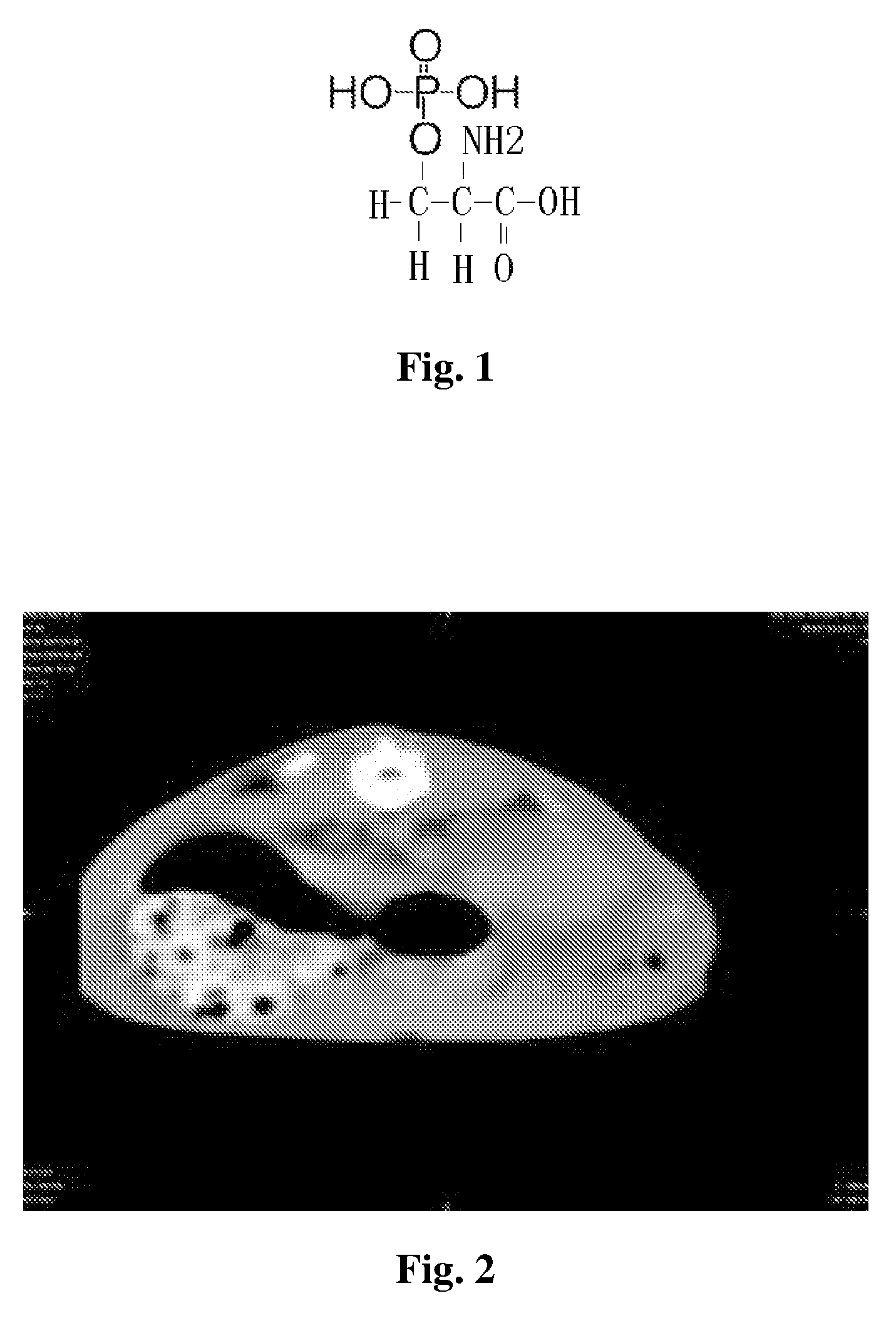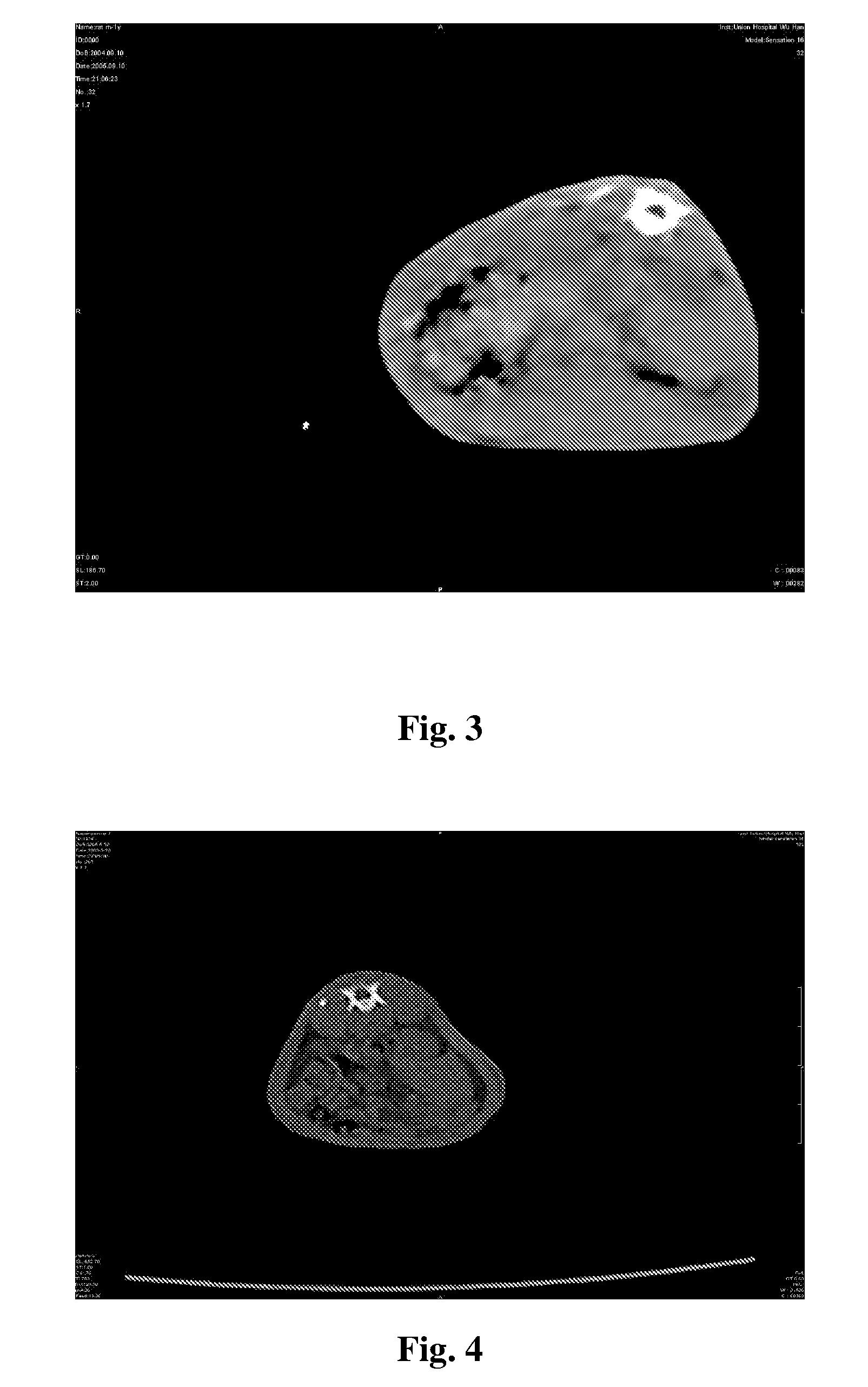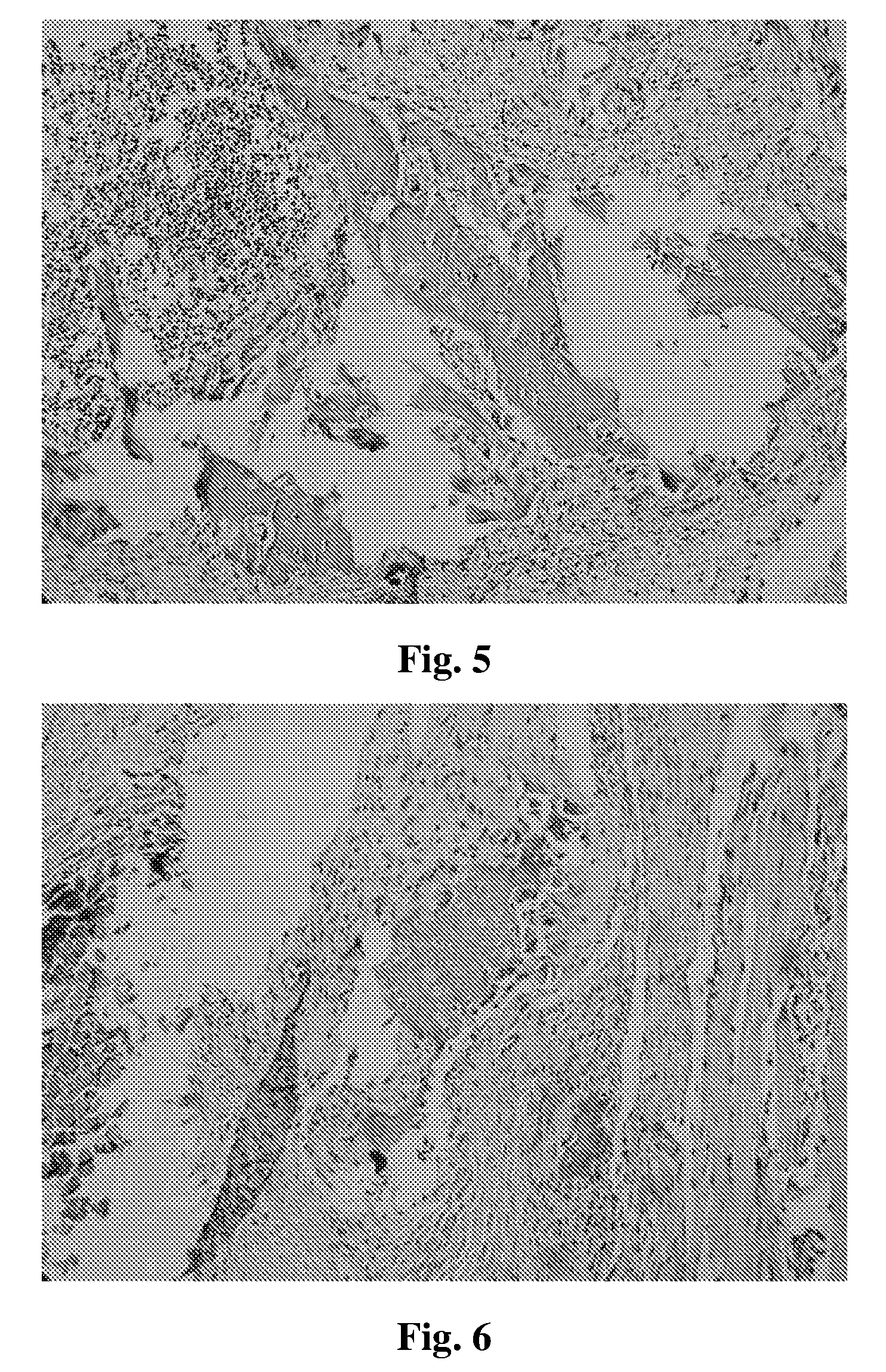Bioactive peptide of bone morphogenetic protein-2
a bioactive peptide and bone morphogenetic technology, applied in the field of clinical medicine, can solve the problems of high market, high cost of individual normal tissues, and urgent demand for substantial bone repair materials, and achieve the effects of facilitating self-assembly deposition of local calcium, good ectopic osteogenesis ability, and better bioactivity
- Summary
- Abstract
- Description
- Claims
- Application Information
AI Technical Summary
Benefits of technology
Problems solved by technology
Method used
Image
Examples
Embodiment Construction
[0038]Further exemplary embodiments and advantages of the present invention are explained below by reference to the drawings: FIGS. 2, 3, 4, 5, 6, 7 and 8 are the results of animal experiments, that are imaging and histological test figures of ectopic osteogenesis after bone morphogenetic protein-2 active peptide 1, 2, 3 placed into Wistar rats. FIGS. 9, 10, 11, 12, 13 and 14 are result figures of matrix material biomineralization experiments.
[0039]1) Experimental Research on Animal Ectopic Osteogenesis:
[0040](1) Material Preparation:
[0041]Bone morphogenetic protein-2 active peptide 1 (S[PO4]KIPKASSVPTELSAISTLYLDDD) (SEQ ID NO: 1), bone morphogenetic protein-2 active peptide 2 (CCCCDDDS[PO4]KIPKASSVPTELSAISTLYL) (SEQ ID NO: 2) and bone morphogenetic protein-2 active peptide 3 (C16H31O—NH—CCCCGGGS[PO4]KIPKASSVPTELSAISTLYL) (SEQ ID NO: 3) are respectively synthesized by FMOC / tBu solid-phase peptide synthesis.
[0042]The used collagen sponge is the product of Wuhan boster company.
[0043]T...
PUM
| Property | Measurement | Unit |
|---|---|---|
| thickness | aaaaa | aaaaa |
| diameter | aaaaa | aaaaa |
| disulfide bond structure | aaaaa | aaaaa |
Abstract
Description
Claims
Application Information
 Login to View More
Login to View More - R&D
- Intellectual Property
- Life Sciences
- Materials
- Tech Scout
- Unparalleled Data Quality
- Higher Quality Content
- 60% Fewer Hallucinations
Browse by: Latest US Patents, China's latest patents, Technical Efficacy Thesaurus, Application Domain, Technology Topic, Popular Technical Reports.
© 2025 PatSnap. All rights reserved.Legal|Privacy policy|Modern Slavery Act Transparency Statement|Sitemap|About US| Contact US: help@patsnap.com



